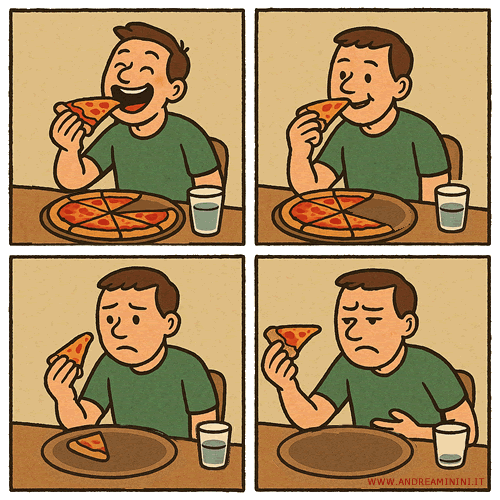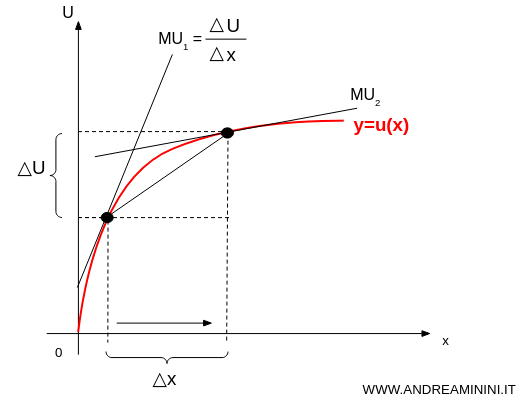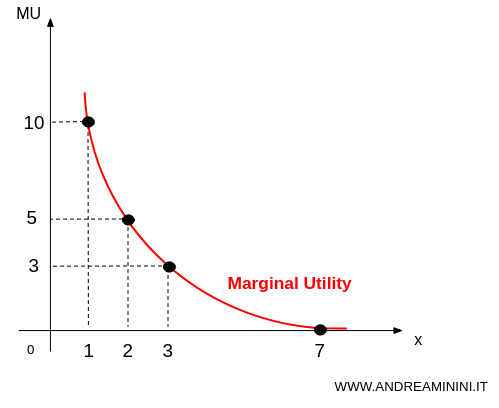What Is Diminishing Marginal Utility?
Diminishing marginal utility is one of the cornerstones of economic thinking. It’s the idea that the more of something you consume, the less satisfaction you get from each additional unit.
Put simply: the first bite is amazing. The second is still good. But by the seventh? You’re probably regretting life choices.
Every Extra Unit Adds Less Joy
That doesn’t mean the good becomes worthless. It just means our personal perceived value drops over time. The excitement fades, like the fizz in an open soda can.
Why it matters: Diminishing marginal utility explains why more isn’t always better - and why smart decision-making means knowing when to stop. It’s essential for understanding everything from personal spending to public policy and taxation.
A Classic Example: Pizza
Let’s say you’re eating pizza.
The first slice? Glorious.
The second? Still satisfying, but you’re no longer starving.

By slice four, you’re starting to slow down. And by slice seven… you’re forcing yourself to keep going, more out of guilt than hunger.
Note: Of course, this varies from person to person. I could probably crush two pizzas no problem… but by the third? I'd be down for the count. The point is universal: the thrill fades the more we repeat something - even if it starts out amazing.
The Economics Behind the Concept
This principle isn’t just common sense - it’s also backed by math.
In economic terms, total utility (what you gain overall) is an increasing but concave function. It goes up, but more and more slowly.

- The first derivative \( U'(x) \) (i.e., marginal utility) is positive but decreasing.
- The second derivative \( U''(x) \) is negative - just like your enthusiasm for binge-watching after five episodes in a row.
Here’s how that plays out with numbers:
| Units Consumed | Marginal Utility (ΔU) |
|---|---|
| 1 | 10.0 |
| 2 | 5.0 |
| 3 | 3.0 |
| 5 | 2.0 |
| 6 | 1.0 |
| 7 | 0.0 |
Note: We’re assuming utility can be measured here - even though, in reality, it’s subjective. But this kind of example helps us visualize what diminishing marginal utility looks like.
Why It Matters (Beyond Pizza)
This concept isn’t just about food - it’s about how we make choices.
We value the first unit of something more than the next. That’s why we think twice before buying a third pair of identical shoes… or working an extra unpaid hour.

It’s the same reason you might be all-in during the first hour of class… but by the fourth? Your brain’s already clocked out.
A Bit of History
The idea of marginal utility dates back to the 19th century, with Hermann Heinrich Gossen. He formalized the notion that the more you consume of a good, the less each additional unit satisfies you.
Economists like William Stanley Jevons and Léon Walras took it further, developing a mathematical model of exchange and equilibrium based on it.
Then came Alfred Marshall, who cemented marginal utility into the framework of welfare economics. He saw it as essential for evaluating the effectiveness of economic policies.
How It Applies in the Real World
This concept is central to marginalist economics - the school of thought that looks at choices “on the margin.” That means weighing the cost and benefit of just one more unit, one more hour, one more dollar.
Example: A business decides whether to produce one more unit by comparing the additional cost to the additional revenue. If the cost is higher, it’s not worth it. Basic? Yes. Crucial? Absolutely.
Our Needs Aren’t Infinite
Here’s the big insight: human needs have limits.
Eventually, more consumption adds less and less value. That’s diminishing marginal utility in action.
Implications for Policy
This idea has powerful implications for taxes, redistribution, and economic justice.
If €100 means much more to someone earning €500 a month than it does to someone earning €10,000, then transferring that money could raise overall well-being.
Example: When a government takes €100 from a high earner and gives it to someone in need, total societal utility can actually increase - because that €100 delivers far more value to the person who had less to begin with.
This is one of the reasons behind progressive taxation: the more you earn, the higher the tax rate on your additional income.
